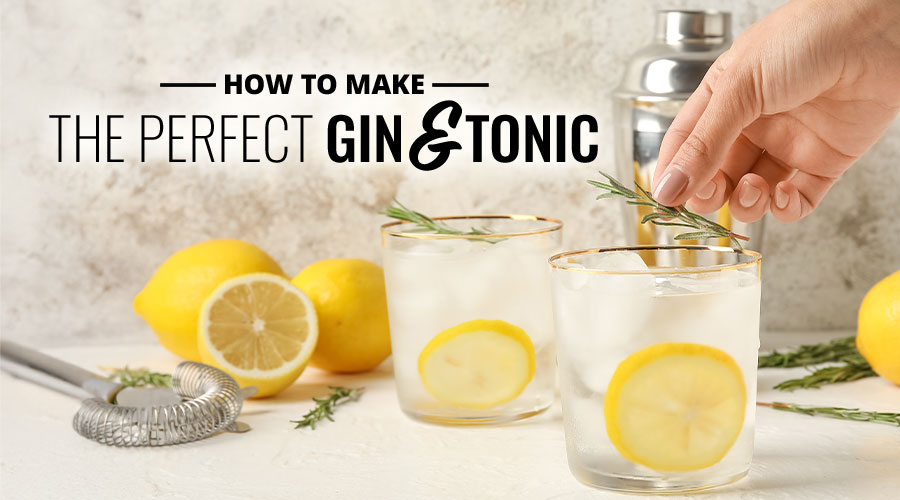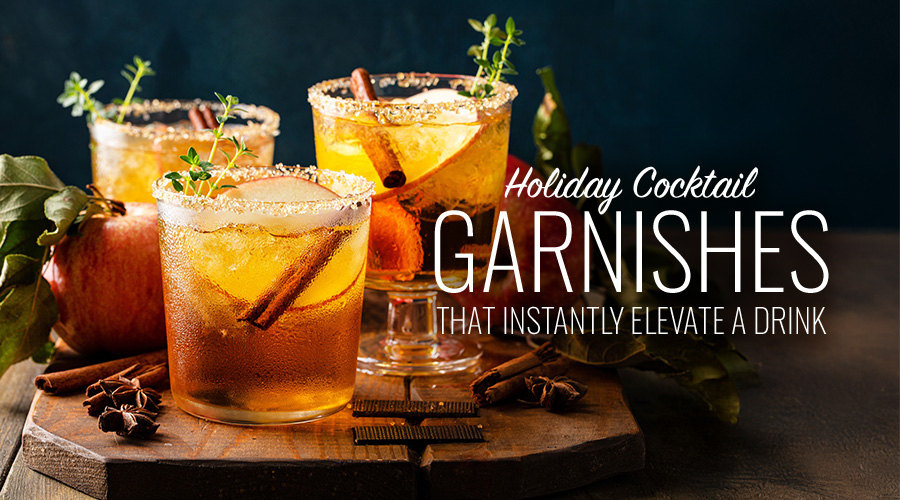
The Gin & Tonic is a cocktail that exudes effortless elegance. This crisp highball, combining gin with effervescent tonic water, is more than just a happy hour staple; it’s a cultural icon. With roots in colonial history, it continues to be a prominent player in contemporary mixology. To truly master this timeless classic, whether you’re a seasoned enthusiast or a newcomer, you need to understand its history, perfect the ratios, select the right ingredients, and pay meticulous attention to details like glassware and garnish. On the blog today, we’ll show you how to serve and craft the perfect Gin & Tonic.
A Short History of the Gin & Tonic
The Gin & Tonic, a timeless classic, originated not in bars but as a medicinal necessity in 19th-century colonial India. British soldiers, battling deadly malaria, relied on quinine from the cinchona tree for its anti-malarial properties.
Because quinine was incredibly bitter, soldiers found it unbearable to drink on its own. They soon discovered that mixing it with sugar, water, and eventually gin made it palatable. This ingenious blend became the Gin & Tonic: a refreshing method for consuming life-saving medicine.
While modern tonic water still contains quinine, it’s in minuscule, safe amounts—insufficient to prevent malaria, but enough to provide the drink’s distinctive bitterness. No longer a life-saving remedy, the Gin & Tonic remains a globally cherished beverage, celebrated for its crisp taste and endless adaptability.
The Best Gin & Tonic Ratios and Garnishes

Finding the Perfect Ratio
Crafting an exceptional Gin & Tonic is an art, balancing flavors and textures to achieve a harmonious equilibrium. The timeless 1:3 gin to tonic water ratio is considered the golden standard, resulting in a drink that is simultaneously crisp, invigorating, and remarkably smooth. This precise proportion allows the gin’s intricate botanical notes to shine, while also highlighting the tonic water’s effervescence and subtle bitterness, creating a refreshing and sophisticated sensory experience.
However, the Gin & Tonic’s appeal also lies in its adaptability. For a more assertive, spirit-forward profile, a stronger 1:2 mix can be used. This reduced tonic water content intensifies the gin’s presence, offering a bolder taste if you’re seeking a more pronounced botanical punch. Alternatively, in warmer climates or for prolonged enjoyment, a lighter 1:4 ratio is ideal. This increased dilution makes the beverage easier to drink in warmer temperatures and ensures extended enjoyment without an overly concentrated flavor. Ultimately, the perfect Gin & Tonic is a matter of personal preference—a delicate dance between tradition and individual taste, allowing for nuanced adjustments to cater to diverse palates and occasions.
Ice: Not Just a Filler
While often overlooked, the quality and quantity of ice are paramount to crafting an exceptional Gin & Tonic. Far from being a mere afterthought, ice plays a critical role in both the temperature and flavor profile of this timeless classic.
The primary function of ice is to keep the drink cold, but not all ice is created equal. The goal is to achieve and maintain a consistently cold temperature without rapidly diluting the delicate balance of flavors. This is where the choice of ice becomes crucial:
- Large Cubes are King: Opt for large, substantial ice cubes over smaller, more numerous ones. Larger cubes have a smaller surface area relative to their volume, meaning they melt much slower. This ensures your G&T stays chilled for longer, allowing you to savor each sip without it becoming too watery.
- Freshness Matters: Always use fresh ice. Ice that has been sitting in the freezer for extended periods can absorb odors and flavors from other items, which can then transfer to your drink, compromising its taste.
- Filtered Water for Purity: The source of your ice is just as important as its size. Ideally, use ice made from filtered water. Tap water can contain impurities, chlorine, or other minerals that can subtly affect the taste of your Gin & Tonic. Filtered water ensures a clean, neutral base for your ice, allowing the nuances of the gin and tonic to shine through.
The “More Ice, Slower Melt” Principle
An essential rule of exceptional bartending is to fill your glass with ample ice. A larger volume of ice provides greater thermal mass, which helps maintain a consistently lower drink temperature. This colder temperature considerably reduces the rate at which the ice melts.
Maintaining Flavor Integrity
Proper icing is crucial for a Gin & Tonic, not just for chilling, but for flavor integrity. Rapidly melting ice dilutes the drink, leading to a bland, watery experience devoid of the crispness and aromatic qualities characteristic of a great Gin & Tonic. Using large, fresh, filtered-water ice preserves the vibrant botanical notes of the gin and the refreshing bitterness of the tonic, ensuring full enjoyment from start to finish.
Garnish Like a Pro
Garnishes elevate both the aroma and aesthetics of your Gin & Tonic. The traditional choice is a wedge of lime, but don’t be afraid to experiment:
Lemon: Bright and zesty.
Grapefruit slices: Add complexity and a hint of bitterness.
Cucumber ribbons: Ideal with floral gins.
Herbs: Rosemary, basil, or mint provide a fresh, garden-like fragrance.
Spices: Juniper berries, pink peppercorns, or star anise add intrigue and depth.
Remember, the garnish should complement your chosen gin—not compete with it!
Top Gin Brands To Use in a G&T
Choosing the perfect gin is essential to elevating your Gin & Tonic from a simple drink to an exceptional experience. Consider these excellent brands sold at Spec’s:
1. Hendrick’s
Botanical Complexity:
- Cucumber & Rose Essence: Hendrick’s signature infusion of Bulgarian rose and cucumber adds a refreshing, floral lift to a G&T, making it smooth and cooling.
- 11 Traditional Botanicals: Juniper, coriander, citrus peel, and more contribute to a balanced, herbaceous profile.
Flavor Pairing with Tonic:
- The crispness of cucumber pairs exceptionally well with dry tonic water, creating a light and elegant drink.
- Works beautifully with garnishes like cucumber ribbons or mint to enhance the refreshing taste.
Tasting Notes:
- Aroma: Fresh, floral, and herbal.
- Palate: Light juniper, with a floral/cucumber core and citrusy brightness.
- Finish: Smooth and slightly sweet.
Best For:
- Classic or garden-style G&Ts, especially with cucumber, mint, or floral tonics (like elderflower or Mediterranean).
2. Empress
Visual Appeal:
- Color-Changing Magic: Infused with butterfly pea flower, Empress gin is indigo blue and turns lavender or pink when tonic (or acid like lime) is added — making your G&T visually stunning.
- It adds a wow factor to any cocktail presentation.
Unique Botanical Profile:
- Includes grapefruit peel, rose, cinnamon, ginger, tea, coriander, and juniper.
- Made with Fairmont Empress tea blend, adding a slightly earthy, tannic quality that plays well with the bitterness of tonic.
Flavor Pairing with Tonic:
- Works beautifully with both Indian tonic and light aromatic tonics.
- Enhances the natural citrus and tea notes when combined with tonic’s quinine bite.
Tasting Notes:
- Aroma: Floral and citrusy, with soft herbal undertones.
- Palate: Grapefruit, rose, and tea up front; light juniper and spice follow.
- Finish: Clean and elegant, slightly dry.
Best For:
- Show-stopping G&Ts at events or dinner parties.
- Pairs well with grapefruit, thyme, rosemary, or lavender as garnishes.
Choosing the Perfect Glass for Your Gin & Tonic
The right glass for your Gin & Tonic is more than just a serving vessel; it significantly impacts the drink’s aroma, taste, and overall enjoyment.

Highball Glass
This traditional, tall, and slender glass is a classic for a reason. It beautifully highlights the drink’s clarity and provides ample space for ice, offering a simple yet effective presentation.
Copa de Balon (Balloon Glass)
This large, balloon-shaped glass, a popular Spanish innovation, has revolutionized the gin experience. Its expansive bowl not only holds more ice and allows for abundant garnishes, but also concentrates the gin’s botanical aromas for a more intense experience.
Stemless Wine Glass
For a contemporary and relaxed feel, a stemless wine glass is an excellent option. It particularly shines when featuring colorful garnishes and showcasing premium gins.
Regardless of your choice, always ensure the glass is well-chilled to achieve the best possible Gin & Tonic experience.
Elevating Your Gin & Tonic Game
The classic Gin & Tonic is perfect as is, but don’t hesitate to explore creative variations and practical adjustments:
- Spanish-Style Gin & Tonics: Serve in a Copa de Balon, adding impressive garnishes such as cinnamon sticks, edible flowers, or fresh herbs.
- Pink Gin & Tonics: Mix pink gin with elderflower or citrus tonic, and garnish with strawberries or raspberries.
- Low-ABV or Non-Alcoholic Options: Reduce the amount of gin, or opt for non-alcoholic substitutes for an alcohol-free version.
- Batching for Parties: Prepare the gin base ahead of time, then add tonic to individual servings to maintain fizz and freshness.
Pairing and Nutrition
What to Eat With a G&T
The adaptable Gin & Tonic is a superb match for a range of foods. Consider these pairings:
- Seafood: Ideal with oysters, ceviche, or grilled shrimp.
- Salty snacks: A great complement to olives, marcona almonds, or crisp potato chips.
- Citrusy dishes: Perfect with lemon chicken, Thai salads, or any dish featuring a bright zest.
With a few quality ingredients and a touch of finesse, anyone can craft a world-class cocktail at home. Therefore, when you reach for that bottle, remember that a truly great Gin & Tonic is about more than just the ingredients—it’s about the artistry of bringing it to life. Cheers!
It’s a classic mixed drink made with gin and tonic water, usually served over ice and garnished with a wedge of lime or lemon.
British soldiers in 19th-century India started mixing gin with tonic water (which contained quinine) to help fight off malaria.
Originally, it was for its quinine content to prevent malaria. Today, it’s prized for its crisp, bitter, and refreshing taste.
A naturally bitter compound derived from the bark of the cinchona tree, historically used as a malaria treatment.
Yes—but only in tiny, safe amounts far below medicinal doses.
Yes—but only in tiny, safe amounts far below medicinal doses.
A common guideline is 1 part gin to 3 parts tonic, but you can adjust it to your taste.
London Dry is the traditional choice, but Old Tom or flavored gins add unique variations.
Premium options like Fever-Tree, Q Tonic, and Schweppes are widely recommended.
Yes! Flavored tonics like elderflower or cucumber pair wonderfully with the right gin.
Definitely. Plenty of fresh ice keeps the drink cold and slows dilution.
Chill your glass first, fill with ice, pour in the gin, top slowly with tonic, then add your garnish.
To maintain the bubbles and keep the drink lively.
A light stir is enough to mix it—avoid over-stirring to preserve carbonation.
Highball glasses and Copa de Balon (balloon) glasses are both excellent choices.
Yes—they elevate the drink. Citrus slices, fresh herbs like rosemary or basil, and spices such as juniper or peppercorns can all enhance flavor.
Absolutely! Pink gin adds fruity notes and pairs well with lighter tonics and berry garnishes.
It’s served in a large balloon glass with elaborate garnishes and top-shelf ingredients for an elevated experience.
Yes—you can reduce the gin amount or use low-ABV gin alternatives.
Yes—try non-alcoholic gins like Seedlip or Monday Gin for a booze-free option.
Seafood, citrus-forward dishes, light appetizers, and salty snacks all complement its bright, botanical notes.
Yes—gin and tonic water are generally gluten-free.
Usually between 120 and 180 calories, depending on the proportions and mixers used.
Yes—if you use sugar-free tonic, it can fit a keto diet.
Gin is often lower in sugar and calories than sweetened spirits, but it’s still alcoholic, so moderation is key.
Like other mixers, it doesn’t offset alcohol’s dehydrating effect.
Because both gin and tonic water are transparent liquids.
The quinine in tonic water glows under UV light, creating a cool visual effect.
Yes—just keep the gin and tonic water separate until serving to keep the bubbles fresh.
The quinine in tonic water gives it its signature bitterness. Adding citrus or a touch of sweetener can help balance it.
It’s easy to make, refreshing, and endlessly customizable with different gins, tonics, and garnishes.




